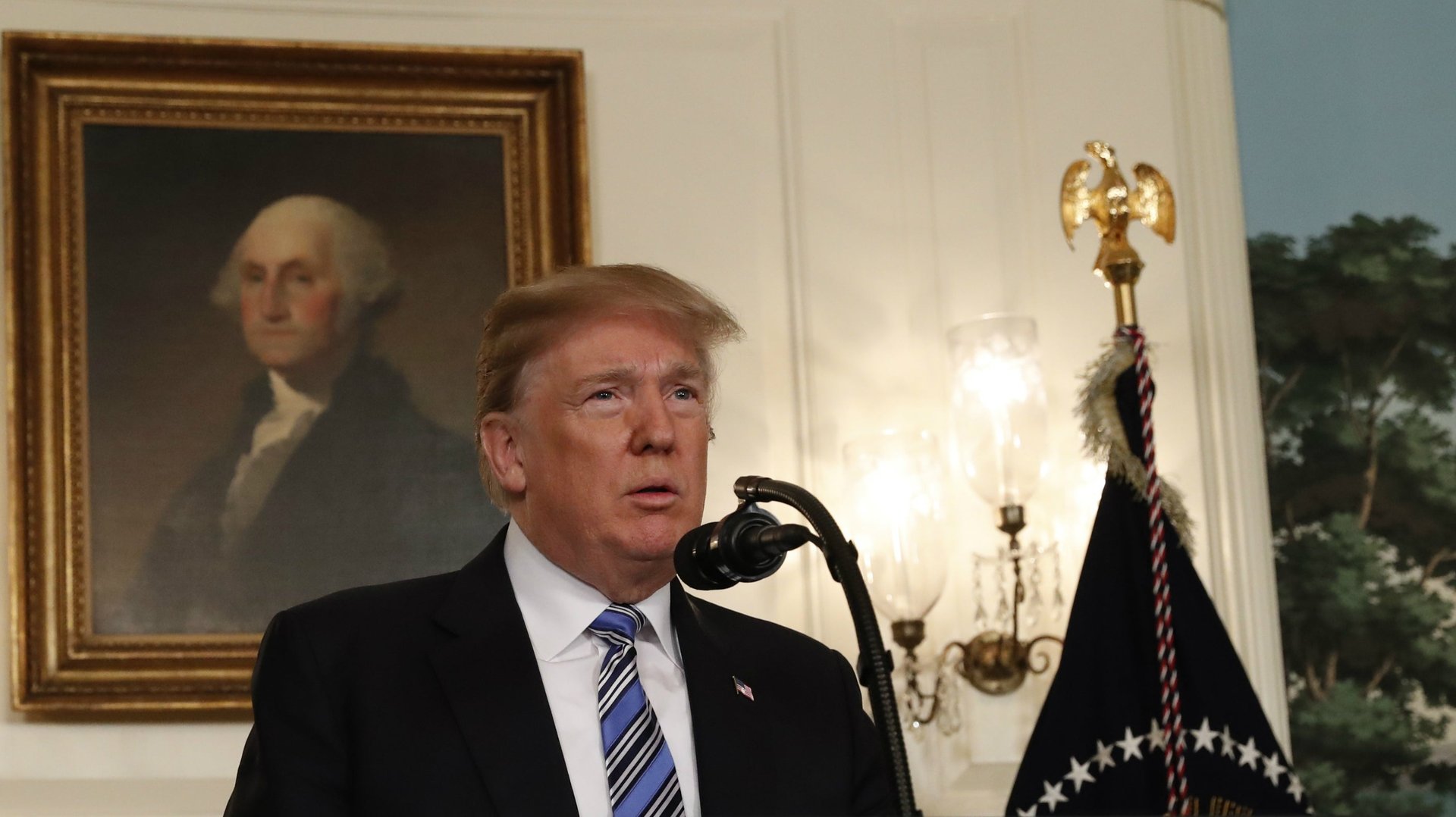Trump’s biggest obstacle to fixing the trade deficit? His own tax cuts
Donald Trump’s only policy success so far is a tax cut that mainly benefits corporations and the mega-rich—a coup that benefits the Republican donor class more than the president’s populist voters. Many expect Trump to prioritize his own agenda this year in an effort to appeal to those voters. And at the top of the list is Trump’s grand ambition of shrinking the yawning US trade deficit.


Donald Trump’s only policy success so far is a tax cut that mainly benefits corporations and the mega-rich—a coup that benefits the Republican donor class more than the president’s populist voters. Many expect Trump to prioritize his own agenda this year in an effort to appeal to those voters. And at the top of the list is Trump’s grand ambition of shrinking the yawning US trade deficit.
The problem is that Trump’s tax cut could help snuff out his chances of realizing that grand ambition, argues Brad Setser, an economist at the Council on Foreign Relations.
The decrease in revenue from tax cuts, alongside hopped-up spending bill Trump just signed, will drive up the US fiscal deficit. All else equal, that means a widening of America’s current account deficit—a measure of an economy’s excess of investment over savings that includes the trade deficit as well as other measures. Using the IMF’s coefficient, Setser estimates that these changes could increase the US current account deficit to 4% of GDP, up an extra percentage point.
The current account deficit increase could, however, be even bigger.
Setser suspects that the US economy is currently operating pretty close to full capacity. One sign of that is the fact that the unemployment rate hovering just above 4%. That will mean any additional demand created by the spending stimulus will drive up Americans’ net imports. That, naturally, benefits other countries. Plus, Americans will have to borrow more to pay for those additional foreign goods.
If that happens, “the US would get stuck with the debt while the United States’ big trading partners would get the stimulus,” writes Setser. “A poorly timed fiscal expansion thus could end up making China, Korea, Japan, Germany, and the other big exporting economies great.” (In fact, that seems to be what happened in the fourth quarter of 2017, he notes. Though domestic demand picked up, it didn’t boost US output that much, since more than half of the GDP growth generated by increased demand was spent on imports. This explains why, despite that jump in domestic demand, overall growth slid.)
Things might go differently, of course. Anything that changes how foreigners invest in the US will also affect the trade deficit. For instance, if the US Federal Reserve holds off on raising short-term interest rates, the trade deficit might not budge much, says Setser. Higher rates on US bonds, on the other hand, would widen the deficit, by hiking up the interest payments the government pays on its external debt.
If financial flows stay steady—and the trade deficit stays where it is—that fatter fiscal deficit caused by the tax cuts would have to be offset somewhere else in US accounts, as either households or businesses upped their own savings rates. How might that play out? Household savings could rise either through falling unemployment or a decline in consumer debt, or a combination of the two. But it’s hard to see unemployment dipping much lower—or, for that matter, a reversal in the steady rise in household borrowing.
More plausible is that Trump tax cut raises corporate savings by shifting of wealth away from the government and households. That would likely flow on to the wealthiest Americans through stock buybacks and dividend payments, driving up total savings, since rich folks tend to consume a much smaller share of their income. That could even help achieve the Trump dream of narrowing the trade gap, all else being equal.
More likely, though, is that the US’s total savings rate will fall. The transfer of wealth to the rich achieved by Trump’s tax cuts will force down household savings, hurting the US’s long-term prospects, as Michael Pettis, finance professor at Peking University, unravels here in detail. Since US businesses are not starved for cash, shifting more money from households and the government to corporate coffers is unlikely to up productive investment in a way that spurs sustainable growth.
Instead, middle-class households would be stuck absorbing the adjustment, offsetting the increased savings of the wealthy with a decline in their own. Unfortunately for them, saving less occurs either through layoffs or rising debt, or a combo of the two. And if the Fed does wind up tightening more, a resulting influx of global capital would crank that pesky trade deficit wider still.